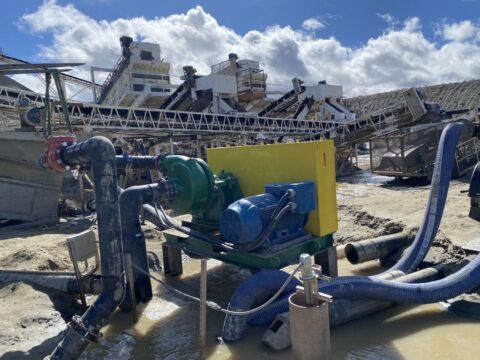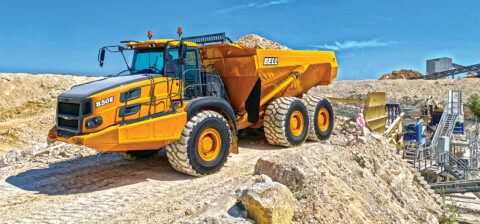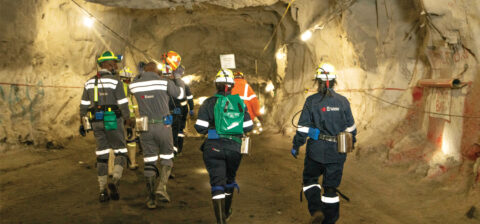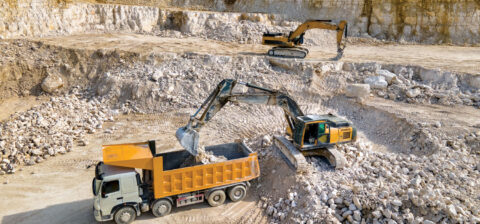SA Mining
Is COVID-19 Fast-Tracking Development Of Intelligent Mining Equipment?
SA Mining recently caught up with Navin Singh, former co-director at the Mandela Mining Precinct, hosted and managed by the CSIR, and Ossie Carstens, CEO of Mining Equipment Manufacturers of South Africa (MEMSA), to chat about the impact of COVID-19 on mining equipment developments.
How important are research and development to the mining sector, and what are the key factors driving the demand for innovative products?
The need for research and development (R&D) in mining is critical as mining companies are always striving to meet best practice and lead in technology development and implementation to ensure that mining stays ahead of the cost curve, and to remain financially viable and ensure long-term gains for the company. While targeting zero harm, the measures also help companies promote sustainability. The key issues remain the need to improve occupational health and safety performance, reduce costs and improve efficiencies. These three are the ubiquitous challenges that will never go away irrespective of where we are in the commodity price rodeo (irrespective of whether it’s high or low).
The COVID-19 pandemic has had a direct impact on mining as well as other industries and sectors. There is a focus on social distancing to ensure that the basic protocols are met. That said, R&D in mining is more medium to long term and thus the trajectory we have started on needs to be maintained to ensure that the end goal of a modern mining environment is achieved.
What are some new developments under way and how will these change the way the mining industry operates?
With the impact of COVID-19, there is a need to move to more digital and virtual engagements and to provide more real-time information management systems so as to be proactive in managing mining operations. Through the Real-Time Information Management Systems Programme (RTIMS) we are creating a framework that will guide mining companies and suppliers of technology to achieve proactive management of mines by ensuring that the right information is sent to the right person at the right time. While developing these frameworks and principles, we are also looking at various highly technical capabilities related to using geophysics to see ahead of the rock face and translate this information into a useable format. This will allow companies to better manage the rock mass and associated geological hazards and through the development of optimised mine designs and better equipment use, companies will be able to access improved efficiencies in a mine.
This, coupled with the development of models on shift cycle optimisation, energy consumption and optimisation and equipment designs which can feed into the RTIMS framework, will help drive the move towards the goal of achieving a modern mining environment. The focus in RTIMS is to provide the basic platforms that will ensure that the miner is enabled through access to information of current operations, access to standards and codes of practice etc. to help ensure safe production. The focus is also on developing intelligent mining equipment that can provide details on issues such as performance, imminent mechanical issues, environmental monitoring, etc. These two areas build on integrated and holistic smart system design using smart systems technology including AI, automation, remote control, autonomous systems and data and information management and technology.
How is COVID-19 influencing the development of mining equipment?
The downturn in mining production initially had the resultant domino effect on manufacturing. As mines have come back to production, mining equipment manufacturers have also been returning to work. While many think that this is an ideal time to introduce mechanisation into mining, it is not that simple to change mining plans. It is exceptionally difficult for deep-level mines in particular given that they face steep gradients and highly geologically disturbed narrow reef stoping environments.
The Mandela Mining Precinct continues to pursue its research into mining mechanisation in a more consolidated manner this year. By combining the non-explosive and mechanised drill and blast programmes into one (called mechanised mining systems), we endeavour to create solutions that target mining all over the reef all the time with no dilution as well as creating ideal platforms to develop South African mechanised mining equipment for underground narrow seam mining.
Further to this, the pandemic has probably accelerated the thinking around combining data that is collected currently as a matter of course, into a dashboard-type approach for on-time reporting and faster decision making – the Fourth Industrial Revolution direction of things to come. The need is to reduce people in confined spaces, ultimately removing them from the dangers inherent in deep-level mining into such a space where the ore can still be mined effectively and efficiently. As an example – the topic of autonomous loading of ore had been bandied around for a while, but technology is now so advanced and readily available that this pandemic will probably be seen as the tipping point in taking this idea forward. It will unlock further opportunities for enhancements probably not previously considered.
Are there any new developments regarding deep-level mining?
The challenge of zero harm remains. It is becoming increasingly critical to ensure we manage the hazards posed by the rock mass from the hanging wall as at the mining face. Through the Advanced Orebody Knowledge programme and in close collaboration with the Longevity of Current Mining programme there are a few initiatives we are working on to address this issue. These initiatives are being undertaken in partnership with the Mine Health and Safety Council to ensure that there is no duplication of work and that the efforts are synergistic.
What has transpired since the challenge and what is the strategy going forward?
COVID-19 has had a significant impact here. In 2019, a successful demonstration was held with Novatek and HPE on their prototypes. The next step was to get the units to a real underground operating mine to demonstrate its full capability. Currently there is a call for a proposal from the research partners to manage this initiative and to undertake independent evaluation of the prototypes. Issues such as drilling time per hole and for the full panel, set-up time, assembly and disassembly, noise etc. will be measured and assessed. These results will be shared with mining companies and used to determine a ranking. Further to this, there will be engagements with government institutions via the Department of Trade and Industry on how funding can be sourced to assist in the commercialisation of the prototypes. More information will flow as the project unfolds.
What is the importance of R&D?
R&D by nature is very often faced with the challenge of being seen as academic rather than industry focused. At the outset, SAMERDI was set up to be industry-driven such that the R&D was focused and directed towards the challenges facing the industry.
The work of the SAMERDI programme builds on the outcomes of prior years. The focus going forward is on integration towards implementable solutions and is fully aligned to the Department of Science and Innovation’s strategic programme of “R&D-led industry development” and supported by the Mineral Council’s Innovation Task Team.
The focused R&D programmes strive to achieve one or more of the following objectives of new products and/or new markets and/or industry growth and/or increased R&D.
It is important to note that the delivery of the SAMERDI programme has not changed. The focus this year is to deliver technological solutions or technology demonstrators that can add value in achieving our initial goals of improving occupational health and safety performance, reducing costs and improving efficiencies.
The approval for the development of a test mine for the South African mining industry is a watershed moment in the journey towards modernisation. Previously R&D initiatives that required testing were at the mercy of a mining company being able to accommodate this within its already constrained production cycle. Valuable technological advances thus never had a fair chance of succeeding as they never received the appropriate prioritisation.







 Sign-up and receive the Business Media MAGS newsletter OR SA Mining newsletter straight to your inbox.
Sign-up and receive the Business Media MAGS newsletter OR SA Mining newsletter straight to your inbox.